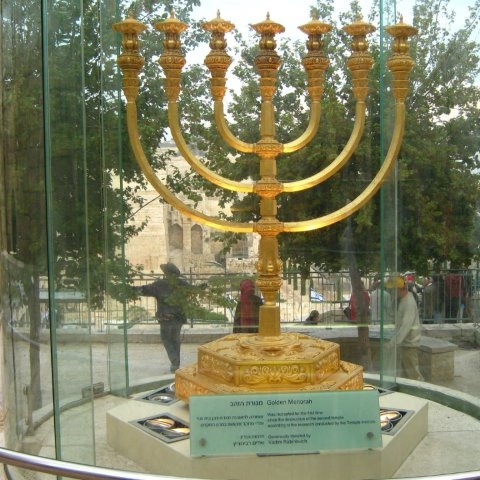click to dowload our latest edition
CLICK HERE TO SUBSCRIBE TO OUR NEWSLETTER


Published
5 years agoon
By
adminJULIE LEIBOWITZ
In an age of emojis and instant communication, symbols are more important than they have ever been.
Chanukah is arguably Judaism’s most overt festival in terms of symbols. A chanukiah lit up in a window is a simple and direct statement that’s difficult to ignore.
The chanukiah has the closest resemblance to Judaism’s oldest symbol, the menorah. In fact, the menorah is acknowledged as the oldest religious symbol in Western culture, and it is still the official emblem of Israel and its government entities.
The seven-branch candlestick dates back thousands of years. It is mentioned in the Torah. It was first found on the Tabernacle of Moses and existed in the First and Second Temples in Jerusalem, where it was kept alight 24 hours a day.
Though there are different ideas about what the original menorah looked like, it is widely agreed that it was about 1.8m tall, made of solid gold, with all seven branches of exactly equal height, and connected to one stem.
The picture of what it looked like – with three circular, half-moon-shaped branches, and a centre branch – comes from a carving in the Arch of Titas, located on the Via Sacra in Rome, which represents the siege of Jerusalem in AD 70.
Recently, another carving of the menorah has been found that predates the Arch of Titas. However, because Titas was based on an eyewitness account of the sacking of the temple, that interpretation is given priority.
“The menorah symbolises G-d’s creation of the world in seven days, and G-d’s constant involvement in the world,” says Rabbi Mendel Rabinowitz of Greenside Shul in Johannesburg.
“For Jews, the menorah represents the light of G-d, the divine presence, the divinely given Torah, the rabbis who interpret it, and the people of Israel itself,” says cultural historian Steven Fine, the author of the book, The Menorah: From the Bible to Modern Israel.
Interestingly, there is a replica of the menorah standing today in the Jewish Quarter of Jerusalem, overlooking the Temple Mount. According to the Temple Institute, which was responsible for its construction, it “was created exclusively to be used in the new Holy Temple”.
Described as containing 45 kilograms of 24-carat gold, and worth about $3 million (R42 million), the institute’s website describes this menorah as being “painstakingly crafted after years of extensive research by the Temple Institute’s full-time staff of researchers”.
Batya Bricker, an adult educator at the Academy of Jewish Thought and Learning, describes the menorah as “a quintessentially Jewish symbol, described in specific detail in the Torah”.
By contrast, she says, a lot of other Jewish symbols, such as the shofar, the olive branch and dove, even the conical Judenhat, do not originate in the Torah, and their meaning has changed over time with use and context, sometimes moving from being an emblem of pride, to shame, and back again.
The Magen David is another example of a symbol that has changed over time. The Star of David is actually a fairly recent representation of Judaism and the Jewish people. It became a Jewish symbol only in the Middle Ages, although it has appeared in religious and cultural practice for millennia.
It was adopted by the Zionist movement at its 1897 Congress, giving it international prominence. It was also used to identify Jews for persecution during the Holocaust. Most recently, it became part of the flag of the state of Israel.
Which brings us back to the chanukiah, which although it may look like a menorah, differs from it in many respects. First, its structure is different – it has eight branches and one raised branch, called a shamash. Second, it uses candles, whereas a menorah burns oil. Third, the chanukiah can be constructed of any material, whereas the menorah is made of solid gold.
Its meaning is also different, Rabinowitz points out. There is a prohibition on exactly replicating elements of the temple while the temple does not exist. The chanukiah, unlike the menorah, is a “rabbinical invention” to remind us each year of the miracle that occurred in the rededicated Second Temple – the fact that the menorah stayed alight for eight days although there was enough oil to keep it burning for only one day.
Bricker says the chanukiah also differs from symbols like Shabbat candles in that it is a public symbol, meant to be placed in the window to publicise the miracle of Chanukah to people passing by, whereas Shabbat candles are more private.
So, who needs emojis when you have a symbol this public, this powerful, and this beautiful?
